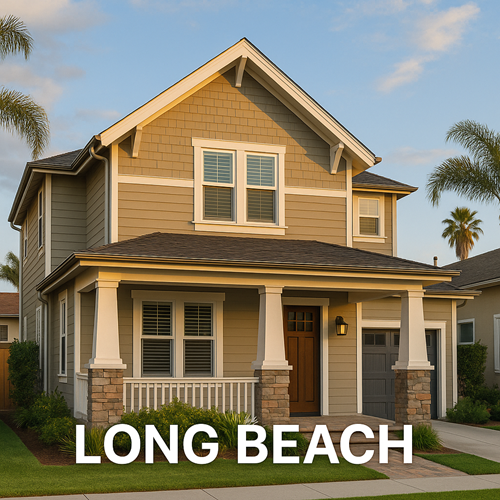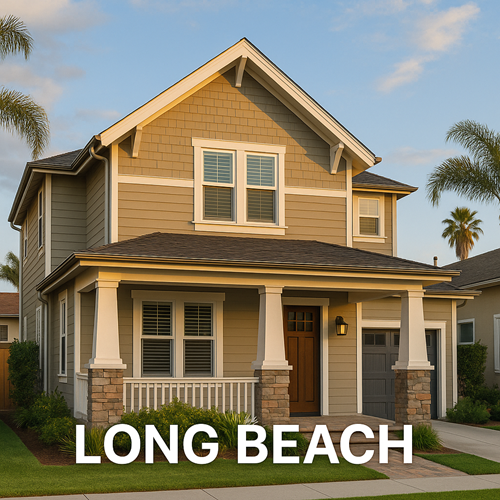Difference in Condition (DIC) insurance: In the intricate world of commercial insurance, businesses often navigate a complex web of policies, each designed to protect against specific perils. However, even the most comprehensive standard property insurance policies can leave critical coverage gaps. These “differences in condition” can expose businesses to significant financial losses when unexpected events occur. This extensive article will unravel the mysteries of DIC insurance, providing a thorough understanding of its coverage, who needs it, and how it acts as an indispensable safety net in an unpredictable world.
Table of Contents

-
Introduction: The Elusive Gaps in Standard Coverage 🌉
-
What is the Difference in Condition Insurance? 🤔
-
Defining the “Difference”
-
The “All-Risks” Nature
-
Key Characteristics
-
-
What Does DIC Insurance Cover? 📝
-
Typical Perils Covered
-
Common Exclusions in Standard Policies
-
Beyond the Basics: Examples of DIC Coverage
-
-
Who Needs Difference in Condition Insurance? 🏢🏭🏗️
-
Businesses in High-Risk Zones
-
Companies with Unique Exposures
-
Organizations with Complex Supply Chains
-
Businesses with International Operations
-
Those Seeking Broader Protection
-
-
The Mechanics of DIC Coverage: How it Works ⚙️
-
Primary vs. Secondary Layer
-
Deductibles and Self-Insured Retentions (SIRs)
-
Sublimits and Aggregates
-
-
Comparison with Other Coverages 📊
Feature Standard Property Insurance Difference in Condition (DIC) Insurance Coverage Scope Named Perils (fire, windstorm, hail, etc.) All-Risks (broader, fills gaps) Exclusions Flood, earthquake, often terrorism, sometimes mold Specifically covers these standard exclusions Trigger Specified named peril Any sudden and accidental loss not otherwise covered Deductible Structure Per peril Often a separate, higher deductible/SIR Purpose Core property protection Supplemental, gap-filling protection -
Scenarios and Outcomes: DIC in Action 🎬Scenario 1: The Unexpected Flood 🌊

-
Scenario 2: Seismic Shockwaves 🌍
-
Scenario 3: Global Supply Chain Interruption 🚢
-
Scenario 4: Political Risk Abroad ✈️
-
Scenario 5: Unforeseen Collapse 🏚️
-
-
Benefits of DIC Insurance ✨
-
Enhanced Financial Security
-
Broader Risk Management
-
Peace of Mind
-
Business Continuity
-
-
Understanding Your Policy: Key Considerations 🧐
-
Reading the Fine Print
-
Policy Limits and Sublimits
-
Working with an Experienced Broker
-
-
Frequently Asked Questions (Q&A) ❓
-
Conclusion: Your Shield Against the Unforeseen 🛡️
-
Contact Sun Insurance and Financial 📞
1. Introduction: The Elusive Gaps in Standard Coverage 🌉

Imagine a robust fortress, meticulously built to withstand common assaults. However, even the most impressive fortifications might have a hidden, less obvious entrance – a “difference in condition” from what was designed. This analogy perfectly illustrates the role of Difference in Condition (DIC) insurance in commercial property protection. While standard commercial property insurance policies provide essential coverage against named perils like fire 🔥, windstorm 🌬️, and theft 👮, they are inherently limited. They often explicitly exclude or provide minimal coverage for catastrophic events such as floods 🌊, earthquakes 🌎, mudslides, and sometimes even terrorism or certain types of collapse. These omissions, though seemingly minor on paper, can become gaping financial chasms when disaster strikes. DIC insurance emerges as the sophisticated solution, meticulously designed to bridge these crucial gaps and provide a comprehensive safety net that standard policies cannot. For any business serious about robust risk management, understanding and implementing DIC coverage is not merely an option, but a strategic imperative.
2. What is the Difference in Condition Insurance? 🤔

Difference in Condition (DIC) insurance is a specialized form of property insurance designed to fill the gaps left by standard property policies. It’s an “all-risks” policy that covers perils typically excluded from traditional commercial property insurance.
-
Defining the “Difference”: The “difference” in Difference in Condition refers to the conditions or perils that are not covered by your primary property insurance policy but are covered by the DIC policy. It provides broader coverage.
-
The “All-Risks” Nature: Unlike “named perils” policies that only cover what’s explicitly listed, DIC insurance operates on an “all-risks” basis. This means it covers all sudden and accidental losses unless specifically excluded. This fundamental distinction makes it incredibly powerful.
-
Key Characteristics:
-
Supplemental: DIC insurance is almost always written as a supplement to a primary property policy. It’s not a standalone policy meant to replace your existing coverage.
-
Broader Coverage: Its primary function is to extend coverage to events such as floods, earthquakes, and, sometimes, political risks or unique perils specific to a business.
-
Higher Deductibles: DIC policies typically feature higher deductibles or Self-Insured Retentions (SIRs) compared to standard property policies, reflecting the catastrophic nature of the risks they cover.
-
No Co-insurance Clause: Unlike many standard property policies, DIC policies often do not contain a co-insurance clause, which can be a significant advantage for policyholders.
-

3. What Does DIC Insurance Cover? 📝
The core strength of DIC insurance lies in its ability to cover perils that are commonly excluded or severely limited in standard commercial property insurance policies.
-
Typical Perils Covered:
-
Flood: 🌊 This is perhaps the most common and critical gap that DIC addresses. Standard policies almost universally exclude flood damage, making DIC essential for any business in a flood zone or for those simply seeking protection against this widespread peril.
-
Earthquake: 🌍 Similar to flood, earthquake damage is routinely excluded from standard property policies. DIC provides crucial protection against the devastating effects of seismic activity.
-
Mudslide/Landslide: Often a consequence of heavy rains or seismic activity, these perils can be covered under a DIC policy, whereas standard policies rarely do.
-
Collapse (Specific Types): While some standard policies offer limited collapse coverage, DIC can extend to more unusual or unspecified causes of collapse.
-
Back-up of Sewers and Drains: While some limited coverage may be available on a standard policy, DIC can provide broader protection.
-
Terrorism (often enhanced): While some standard policies include basic terrorism coverage, DIC can usually provide more robust or broader definitions and limits.
-
Specific Transit and Cargo Perils: For businesses with complex logistics, DIC can cover transit risks that standard cargo insurance may not adequately address.
-
Political Risk (for international operations): Confiscation, nationalization, or political violence for properties or assets abroad can be covered.
-


-
Common Exclusions in Standard Policies:
Standard property policies often have a litany of exclusions that DIC policies aim to address. These commonly include:
-
War and nuclear hazards ☢️
-
Government action
-
Pollution (though specific environmental policies exist)
-
Wear and tear, rust, and gradual deterioration
-
Faulty design or artistry (though resulting damage might be covered)
-
Losses due to power failure originating off-premises (unless endorsed)
-
Fungus, wet rot, dry rot, bacteria (mold) 🍄 (unless caused by a covered peril)
-
-
Beyond the Basics: Examples of DIC Coverage:
A construction company building a new high-rise in a seismically active area would find its standard builder’s risk policy insufficient for earthquake damage. A DIC policy would bridge this gap. Similarly, a manufacturing plant located near a river, even with flood mitigation efforts, faces an immense risk that only DIC can adequately cover. A global logistics firm might use DIC to cover goods in transit through politically unstable regions where standard cargo insurance has exclusions.
4. Who Needs Difference in Condition Insurance? 🏢🏭🏗️

While virtually any business can benefit from the expanded protection offered by Difference in Condition insurance, certain entities and situations make it an absolute necessity.
-
Businesses in High-Risk Zones:
-
Flood Plains: Businesses located in designated flood zones or areas prone to heavy rainfall and rising water levels.
-
Seismic Zones: Companies operating in regions known for earthquake activity (e.g., California, Pacific Northwest, New Madrid Seismic Zone).
-
Coastal Areas: Businesses are vulnerable to storm surge, tsunamis, or erosion caused by extreme weather events.
-
Areas prone to Mudslides/Landslides: Businesses situated near steep slopes or unstable terrain.
-
-
Companies with Unique Exposures:
-
Large Manufacturing Facilities: Extensive property and equipment make them highly vulnerable to catastrophic losses from excluded perils.
-
Real Estate Developers and Property Owners: Especially those with diverse portfolios spanning multiple geographic locations.
-
Hospitality Industry (Hotels, Resorts): Often located in scenic, but sometimes high-risk, areas (coastal, mountainous) and facing significant business interruption risks.
-
Critical Infrastructure Operators: Utilities, data centers, and telecommunications companies, where even minor disruptions can have a widespread impact.
-
Businesses with Older Buildings: Structures that may be more susceptible to damage from events like earthquakes or severe weather.
-
-
Organizations with Complex Supply Chains: 🚢
Businesses that rely heavily on the movement of goods and materials globally can face unforeseen risks, such as political upheaval in transit countries or specific perils that disrupt logistics hubs. DIC can extend coverage to these intricate interdependencies.
-
Businesses with International Operations: ✈️
Operating in foreign countries introduces a host of political risks, including expropriation, nationalization, currency inconvertibility, and political violence, which are rarely covered by standard domestic property policies. DIC can be tailored to address these specific international exposures.
-
Those Seeking Broader Protection:
Even if a business isn’t in a classically “high-risk” zone, the increasing unpredictability of global climate patterns and geopolitical events means that what was once considered a low-probability event can quickly become a reality. DIC offers a prudent approach to comprehensive risk management for any business unwilling to accept significant coverage gaps. It’s about proactive preparedness rather than reactive recovery.
5. The Mechanics of DIC Coverage: How it Works ⚙️

Understanding how DIC insurance functions within your overall insurance program is crucial for maximizing its benefits.
-
Primary vs. Secondary Layer: DIC insurance typically acts as a secondary or excess layer of coverage. It “drops down” to pay for losses that are specifically excluded by your primary commercial property insurance policy. For instance, if your primary policy excludes flood and your property experiences flood damage, the DIC policy would respond as if it were primary for that specific peril. It also generally covers the difference between the limits of your primary policy and the DIC policy for perils not excluded by the primary but where the primary limit might be insufficient.
-
Deductibles and Self-Insured Retentions (SIRs): DIC policies often come with a substantial deductible or a Self-Insured Retention (SIR).
-
Deductible: The amount the policyholder must pay out-of-pocket before the insurance coverage kicks in.
-
SIR: Similar to a deductible, but with an SIR, the policyholder is responsible for managing the claims process and paying losses up to the SIR amount before the insurer becomes involved. SIRs are typically more common in larger, more complex DIC programs. These amounts are usually higher than standard property deductibles, reflecting the catastrophic nature of the perils being covered.
-
-
Sublimits and Aggregates:
-
Sublimits: DIC policies may contain sublimits for specific perils. For example, while the overall policy limit might be $100 million, there might be a $25 million sublimit specifically for earthquake or flood damage. It’s vital to understand these limitations.
-
Aggregates: An aggregate limit is the maximum amount an insurer will pay out for all covered losses within a specified policy period, regardless of how many individual losses occur. DIC policies for catastrophic perils often have high aggregate limits to cover multiple potential events.
-
6. Comparison with Other Coverages 📊

To truly appreciate the value of DIC insurance, it’s helpful to compare it directly with other common insurance types.
| Feature | Standard Property Insurance | Difference in Condition Insurance | Business Interruption Insurance | Builders Risk Insurance |
| Coverage Scope | Named Perils (fire, windstorm, hail, etc.) | All-Risks (broader, fills gaps) | Loss of income due to covered property damage | Damage to a building under construction |
| Exclusions | Flood, earthquake, terrorism, mold | Specifically covers these standard exclusions | Damage from non-covered perils | Damage from non-covered perils |
| Trigger | Specified named peril | Any sudden and accidental loss not otherwise covered | Physical damage to property (covered peril) | Physical damage to building (covered peril) |
| Deductible Structure | Per peril | Often a separate, higher deductible/SIR | Time-based or dollar amount | Per occurrence |
| Purpose | Core property protection | Supplemental, gap-filling protection | Income protection during recovery | Protects a construction project |
| Relationship to DIC | DIC supplements this | DIC covers what standard policies don’t | Can be triggered by DIC-covered events | DIC can expand the perils covered for a builders’ risk |
This table highlights how DIC insurance doesn’t replace other policies but rather enhances them, creating a more robust, comprehensive insurance program. For instance, while Business Interruption Insurance covers lost income, it only kicks in if an underlying property policy covers the property damage itself. If a flood (excluded by standard property) causes the damage, neither the standard property nor the business interruption policy would respond unless DIC was in place to cover the flood damage.
7. Scenarios and Outcomes: DIC in Action 🎬

Let’s illustrate the critical role of DIC insurance through several real-world scenarios.
-
Scenario 1: The Unexpected Flood 🌊
-
Situation: “Riverbend Manufacturing” is located just outside a designated 100-year flood plain. They have a standard commercial property policy that covers fire, wind, and other basic perils. Unexpected torrential rains cause a nearby river to overflow its banks, flooding the manufacturing plant and causing $5 million in damage to machinery and inventory.
-
Without DIC: Their standard property policy explicitly excludes flood damage. Riverbend Manufacturing would be solely responsible for the entire $5 million in damages, potentially leading to bankruptcy and job losses. 💔
-
With DIC: Their DIC policy specifically includes flood coverage with a $250,000 SIR. Riverbend Manufacturing pays the $250,000, and the DIC policy covers the remaining $4.75 million, allowing them to rebuild and resume operations quickly. 💪
-
-
Scenario 2: Seismic Shockwaves 🌍
-
Situation: “Tech Innovations Inc.” operates a data center in a region with infrequent, but historically significant, seismic activity. Their standard property policy excludes earthquake damage. A sudden, powerful earthquake strikes, causing significant structural damage to the building and critical server racks, totaling $10 million in losses.
-
Without DIC: The multi-million dollar damage is uncovered, putting Tech Innovations Inc. at severe risk of collapse. Their clients, relying on their data, face immense disruption. 💥
-
With DIC: Their DIC policy includes robust earthquake coverage with a $500,000 deductible. The policy pays $9.5 million, enabling Tech Innovations Inc. to repair its facility, replace equipment, and restore services, maintaining client trust and business continuity. ✅
-
-
Scenario 3: Global Supply Chain Interruption 🚢
-
Situation: “Global Garments,” an apparel company, sources raw materials from various countries. A key supplier’s factory in a foreign country collapses due to faulty infrastructure, resulting in a critical materials shortage and causing Global Garments to face significant production delays and lost sales. Their standard property policy covers their own premises but not this external factor.
-
Without DIC, Global Garments Inc. incurs substantial financial losses due to its inability to produce goods, with no recourse under its property insurance. 📉
-
With DIC: A tailored DIC policy includes contingent business interruption coverage for specific perils at supplier locations, even if the supplier locations are not physically owned. The policy covers the lost profits and extra expenses incurred during the interruption, mitigating the financial impact. 🤝
-
-
Scenario 4: Political Risk Abroad ✈️
-
Situation: “International Energy Solutions” owns a valuable processing plant in a developing country. Due to unforeseen political instability, the government nationalized the industry, seizing International Energy Solutions’ assets without compensation.
-
Without DIC, International Energy Solutions suffers a total loss of its multi-million dollar foreign asset, as its domestic property policy has explicit political risk exclusions. 🚫
-
With DIC: Their DIC policy, specifically designed to include political risk coverage, responds to the nationalization event, compensating International Energy Solutions for their lost assets, allowing them to recover some of their investment. 💸
-
-
Scenario 5: Unforeseen Collapse 🏚️
-
Situation: A manufacturing facility experiences an unexpected roof collapse during a period of heavy, prolonged snowfall, which was not considered a “named storm” event and did not exceed the building’s weight load specifications for its age. The standard property policy has limited “collapse” clauses and disputes the cause, citing wear and tear or specific exclusions.
-
Without DIC: The claim becomes a lengthy legal battle, potentially delaying repairs and incurring significant out-of-pocket costs for the business. 🧑⚖️
-
With DIC: A comprehensive DIC policy, with its “all-risks” nature, would likely cover the collapse as a sudden and accidental loss not specifically excluded, leading to a much smoother claims process and faster recovery for the business. 🚀
-
These scenarios vividly demonstrate that DIC insurance isn’t just an extra layer; it’s often the foundational layer that ensures proper protection against the most financially devastating, yet commonly excluded, perils.
8. Benefits of DIC Insurance ✨

The advantages of implementing a robust Difference in Condition insurance program extend far beyond mere financial compensation.
-
Enhanced Financial Security: This is the most direct benefit. DIC insurance protects a business from catastrophic financial losses due to events like floods or earthquakes that would otherwise be entirely uninsured. It prevents insolvency and ensures funds are available for recovery. 💰
-
Broader Risk Management: By covering perils typically excluded, DIC insurance enables businesses to adopt a truly comprehensive risk management approach, addressing vulnerabilities that are often overlooked until it’s too late. It closes critical gaps in a company’s overall risk profile. 🎯
-
Peace of Mind: Business owners and executives can operate with greater confidence, knowing their assets and operations are protected against a broader array of unforeseen disasters. This psychological benefit can be invaluable, allowing focus on growth rather than constant worry. 😌
-
Business Continuity: By providing funds for repair, reconstruction, and often business interruption stemming from DIC-covered perils, this insurance helps businesses recover faster and minimize downtime. Maintaining operations is crucial for customer retention and market position. 📈
-
Facilitates Growth and Investment: Knowing that a comprehensive insurance program is in place can make businesses more attractive to investors, lenders, and partners, as it demonstrates a commitment to robust risk mitigation. It supports strategic expansion without undue fear of unforeseen setbacks. 💼
-
Tailored Solutions: DIC policies are highly customizable. They can be specifically designed to address the unique exposures of a particular business, industry, or geographical location, offering targeted protection where it’s needed most. 🧵
9. Understanding Your Policy: Key Considerations 🧐

Acquiring DIC insurance is just the first step. I want you to know that truly leveraging its power requires careful attention to the details of your specific policy.
-
Reading the Fine Print: DIC policies, like all insurance contracts, contain specific terms, conditions, and exclusions. You need to review these details thoroughly. Understand what’s explicitly covered, what’s specifically excluded, and any conditions that must be met for coverage to apply. Please don’t assume coverage; always verify. 📖
-
Policy Limits and Sublimits: Pay close attention to the overall policy limit and any specific sublimits for particular perils (e.g., a total limit of $50 million, but only $10 million for flood damage). Could you make sure these limits are adequate to cover your maximum probable loss for each catastrophic event? 📊
-
Deductibles/SIRs: Be clear on the amount of your deductible or Self-Insured Retention. These figures will directly impact your out-of-pocket expenses in the event of a claim. Please ensure your business has sufficient liquidity to cover these amounts. 💸
-
Territorial Scope: For businesses with international operations, confirm the geographical scope of the DIC policy. Does it cover assets and operations in all the countries where you do business, especially those with higher political or natural disaster risks? 🌎
-
Working with an Experienced Broker: The complexity of DIC insurance makes it essential to partner with an experienced, knowledgeable insurance broker. A good broker can:
-
Please review your unique risks and exposures.
-
You can design a customized DIC program tailored to your needs.
-
Negotiate favorable terms and conditions with insurers.
-
Could you explain policy intricacies in clear, understandable language?
-
I want to help you through the claims process.
Their expertise is invaluable in navigating this specialized area of insurance.
-
10. Frequently Asked Questions (Q&A) ❓

Here are some common questions about Difference in Condition (DIC) insurance:
Q1: Is DIC insurance a replacement for my standard commercial property insurance?A1: No, absolutely not. DIC insurance is supplemental. It’s designed to fill gaps in your standard property policy, not replace it. Your standard policy covers the “named perils,” and DIC picks up what it leaves out, primarily catastrophic events like flood and earthquake. 🤝
Q2: Is DIC insurance expensive?A2: The cost of DIC insurance varies significantly based on several factors, including your location (risk of flood/earthquake), the value of your property, your desired limits, and your deductible/SIR. Because it covers catastrophic risks, it can be more expensive than some standard coverages, but the protection it offers against immense financial loss is often well worth the investment. It’s an investment in your business’s survival. 💲
Q3: Can I get DIC insurance just for flood, or just for earthquake?A3: Often, DIC policies are structured to cover multiple perils that are typically excluded from standard policies (e.g., both flood and earthquake). However, policies can be customized, and specific endorsements can sometimes be added for particular risks. An experienced broker can help tailor the coverage to your exact needs. 🎯
Q4: Does DIC insurance cover business interruption?A4: Yes, many DIC policies include business interruption coverage for losses resulting from a DIC-covered peril. For example, if a flood (covered by DIC) causes your business to shut down, the DIC policy’s business interruption component would cover your lost income and extra expenses during the recovery period. This is a critical feature! 📈
Q5: What’s the main difference between a deductible and a Self-Insured Retention (SIR) in a DIC policy?A5: While both represent the amount you pay before the insurer does, with a deductible, the insurer is usually involved from the first dollar of loss, and they deduct their portion. With an SIR, you are responsible for the entire loss and its handling up to the SIR amount, and the insurer only steps in once that amount has been exceeded. SIRs are often used by larger companies with the capacity to manage initial losses. ⚙️
Q6: Is DIC insurance only for large corporations?A6: While large corporations often use DIC due to their complex exposures, businesses of all sizes can benefit, especially those in high-risk zones. A small business in a flood-prone area, for instance, might find DIC even more critical for its survival than a large, diversified corporation. It’s about risk exposure, not just size. 🏢
Q7: Can DIC insurance cover perils like mold or pollution?A7: Standard DIC policies typically focus on catastrophic perils like flood and earthquake. While some comprehensive “all-risk” policies may include language that could extend to unusual mold or pollution events (if they are “sudden and accidental” and not otherwise excluded), these specific risks are usually better addressed by dedicated environmental liability or specialized mold remediation policies. You can always discuss specific concerns with your broker. 🍄
11. Conclusion: Your Shield Against the Unforeseen 🛡️

In an era defined by increasing climate volatility, global interconnectedness, and unforeseen challenges, relying solely on standard commercial property insurance is a perilous gamble. Difference in Condition insurance transcends the limitations of traditional policies, providing an indispensable shield against catastrophic events like floods and earthquakes that can devastate businesses. It’s not merely an additional policy; it’s a strategic component of a resilient risk management framework. By bridging crucial coverage gaps, DIC insurance empowers businesses with enhanced financial security, fosters continuous operations, and provides the invaluable peace of mind needed to thrive amidst uncertainty. For any company committed to protecting its assets, its future, and its stakeholders, a thorough understanding and implementation of DIC insurance are non-negotiable imperatives. Don’t leave your business vulnerable to the unknowns; secure your future with comprehensive protection.
Contact Sun Insurance and Financial 📞
For expert guidance on Difference in Condition Insurance and a tailored assessment of your business’s unique risk profile, please get in touch with the experienced professionals at Sun Insurance and Financial.
Telephone: (310) 860-5000
Sun Insurance and Financial https://SunInsurance.us
Travelers Insurance
The Hartford Insurance
California Fair Plan Insurance
Hiscox Insurance


https://shorturl.fm/4vHUc
https://shorturl.fm/GEG6T